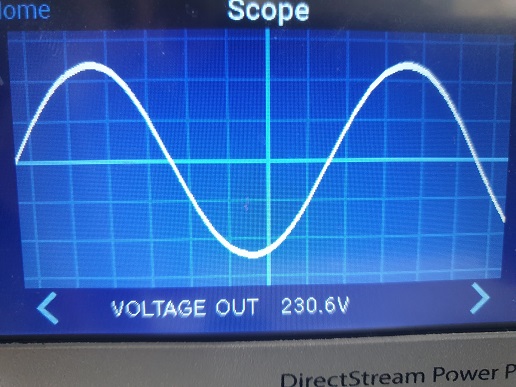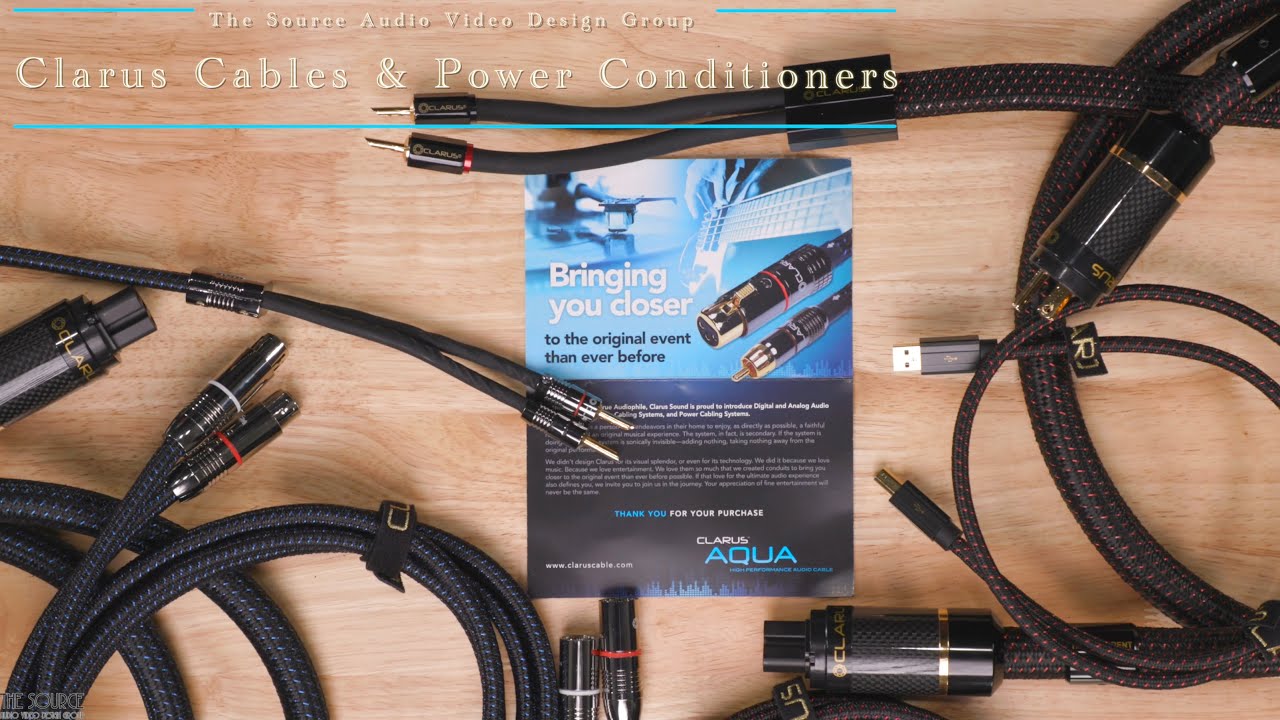I tried removing all the power cables and power strips. I couldn’t hear anything.
If you have a lot of noise on your AC lines, or are running hardware that uses SMPS that does allows noise back onto the AC supply (95% of all cheap hardware that ships with an SMPS, especially wall-warts, and a distressing percentage of high-end hardware too), then a good power conditioner can be anywhere from making inaudible changes to being an absolute requirement.
“Good” in the above case is down to it a) conditioning the line in a manner that address any noise/line-issues you have and b) doing it to the point where there’s an audible change (usually a lowering of the noise floor/blackening of the background).
The power-strip really just needs to be able to pass enough current and not add noise of its own. Though if the power-strip isolates the sockets it provides to prevent cross-contamination (e.g. with SMPS plugged into it), that can be useful.
Power cables can make a small difference in an otherwise well sorted system. Electrically, once they’re passing enough current and not adding significant resistance, its really just down to skin-effect filtering - which isn’t much of an issue at anything around audio frequencies, and shielding so they don’t pickup RF/EM energy and add it to the line as noise.
It’s worth noting that power cables with larger diameter conductors will generally offer lower resistance than smaller ones, however the device they’re powering can still only draw the amount of current it actually needs. And if it’s internal wiring, or PCB traces, offer higher resistance than the power cable, then you’re not really gaining anything with fatter conductors on the external cables.
Outside of obvious, audible (or measurable, as long as you’re being sane about it) noise issues, you’re best of focusing on getting your primary components (source, DAC, amp, headphones and even interconnects) to the level you want them before you start spending any significant sum on power cables and power-strips.
another factor is the “object” receiving the AC power and it’s sensitivity to the power input. My laptop and dvd player show no impact from the conditioner, nor does my computer monitor, while my plasma tv does. When we were developing color prints, the color enlarger showed a significant improvement in consistency when using a line conditioner.
Great explanation from Paul:
If what he says is true, a power conditioner may actually sabotage the listening experience, and the true holy grail might be one having its own home clean transformer (i.e., energy from as upstream as possible – if such thing even exists). The utopia never ends. 
Speaking of Paul, I moved one of my regenerators into the office system tonight (PS Audio Power Plant P5). I was using an Audience aR2P in the office and connected the system with a non-surge type power strip. I think it sound a little more dynamic, but it might be listener bias, who knows. I repurposed the Audience line conditioner into the main system, since I took the multi channel amp off of the P5 regenerator. I also use a PS Audio P12 regenerator for my main system.
Any other regenerator users on the board?
Never used a regenerator, but my problem was just sorry , noisy power coming into the home. I was lucky to still have contacts at the company I used to work for and one of my old employees came out with Rohde & Schwartz Power analyzer and he charted the noise on the mains. Instead of adding thousands of dollars in my home, we got an electrician that actually understood audio and the local power company at the house at the same time. We showed them our results and that pretty much drove the power company to start looking. Found broken grounds at a few poles, and a noisy transformer a block away. It got so intense with the power company they sent out one of their " engineers" and he saw our data, agreed, and then was more interested in the power analyzer and put up his little Fluke power quality meter. Needless to say, if you can get your power company to work with an electrician that understands what you are trying to accomplish inside your home, you can reduce the amount of products needed to provide clean power within your home. In Florida the law requires utilities to rectify power-line interference problems, but you pretty much have to push them.
PS Audio DSP5 user here for what was later renamed to P12 because…12>5.
Power regeneration/conditioning is hard to pin down because it’s a complex issue with a multitude of branches.
Besides cleaning I want to have rock steady voltage, usual tolerance is 5% for tubes, I don’t do over/under 2%. A 230V amp on 240V has an over voltage of 4.2% and if it’s already borderline by design or part tolerance(most resistors are 5-10%) it can push it over spec so you’re killing the tubes faster and don’t even know it. Undervoltage is just as bad.
Here’s the input and output of my mains. As a rule clipping of the waveform doesn’t sound good.


I see four issues that I’ve faced, there may be others:
- chopped mains waveform -> Fixed by regen not by conditioning
- noise on mains(large THD) -> Fixed by regen and conditioning
- DC on mains(causes noise in the unit itself) -> Fixed by regen, conditioning(sometimes) and cheap(ish) DC blockers. I have one in front of the P12.
- bad ground -> Fixed by a new stick in the ground, no electronics will help.
As far as the amp/dac itself, yes you can build a more robust and expensive power supply that can tackle some issues but not others. I’d question myself why add cost and complexity to a unit without a guarantee so many don’t. I wouldn’t myself unless going for an over engineered solution or it’s a personal project.
As far as the PSU should already filter because that’s its job: This hinges on a few design choices but mainly how the mains transformer is built -> can noise from the mains capacitively couple in the circuit? If yes there’s a higher chance the amp will be sensitive to mains quality. This isn’t anything new and is a problem with a solution, double wound transformer bobbin(cost), electrostatic shield between windings(lowers trafo power), double isolation trafo(not commonly found), add a million chokes(cost, weight and size), voltage regulation(some don’t like sand in the psu).
Yet I think this is the wrong target to tackle. Fixing the mains can be an improvement but you need a pretty good system to hear or fully appreciate the changes, if you have a problem in the first place, many start to fix what isn’t broken.It’s hard to judge without equipment how the mains quality really is. Scoping the socket isn’t trivial and shouldn’t be attempted.
Thanks for your post.
Voltage in my area (US 120v SoCal) is pretty good, historically less than 2% THD. Voltage consistency is not quite as good, so the regenerator helps with that. I’ve had the P5 since 2012, and the P12 since the fall of 2018. I think they are good products.
I also had experienced a power company issue a few years ago (2010). Excess voltage. I would call the Power Company in the middle of the night when they were delivering 135V. The came out and checked my panel, and everything checked normal. Turns out there was a defective regulator which didn’t lower voltage during non-peak periods (not as much need for Air conditioning in the middle of the night).
Where does balanced power play into this such as an Equi=Tech unit?
I’ve run a Tripp Lite in my system before, it’s what I run up at the TN meets pretty much every time.
Good to see how robust it is! I’ll have to pick up well a bunch more to replace my entry level Furman stuff!
Yikes, Damn, and other Expletives. I just did a pointer to a question I posted here:
Now your on point thing is in yet ANOTHER old Power topic.
Although looking at the Clarus price tags and their lines, Concerto, Sextet, Duo, I’m probably not even looking to afford a Croaking Chorus from the Frogs of Aristophanes.
Topic revival notice
Today at work there were two nasty power blips. One an outage for about 5-10 minutes, the other only a couple of seconds.
One of them must have cause the power switch on my Sansei AU-919 to arc. It still works just fine, but the shutoff is now located at the wall outlet…
While I have my restorer working on finding a new switch that matches or can be modified with the stock throw lever he suggested that I might invest in not a line conditioner, but a UPS designed for audio use.
At home I have conditioners - a Furman and an old Monster Cable, and on the computer and main headphone stack mid-price (under $200) Trip-Lite.
The big ol amp does draw a bit of power, but 15 amp should be more than adequate. What do you-all suggest, and where can I find it reasonably?
This is about what I use at home - it it at all appropriate for speaker/amp audio system? *
Amazon.com: Tripp Lite OMNI1500LCDT 1500VA UPS LCD AVR : Electronics
Is the solution to get a UPS for backup and plug a power line conditioner into it?
I have 2 and won’t plug my audio gear into either.
If your going to plug audio gear into it, you’ll want something that does “pure sinewave” output rather than unfiltered PWM sine outputs or stepped sine waves, that all the lower priced ones do.
Unlike regenerators, all the ones targeting home use are basically a surge protector with pass through until the power goes out, then they swap to battery, and you get some sort of generated AC output.
I just decided that I don’t need a UPS, just a line conditioner/surge protector. So I ordered the Audioquest PowerQuest 2 from headphones.com. I hear that they have a good return policy and are nice folks to deal with.
Yeah, I’ve heard that too! ![]()

